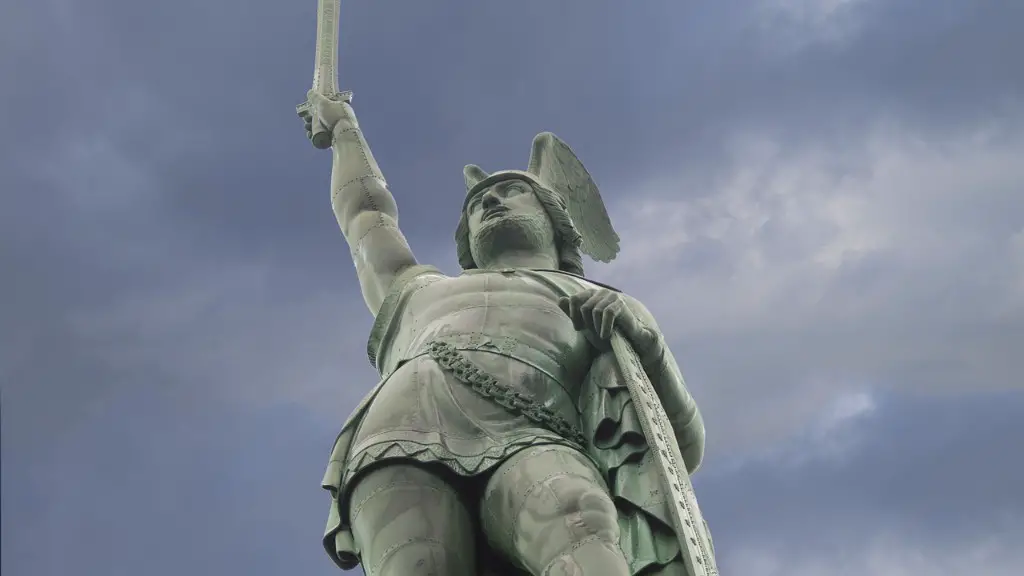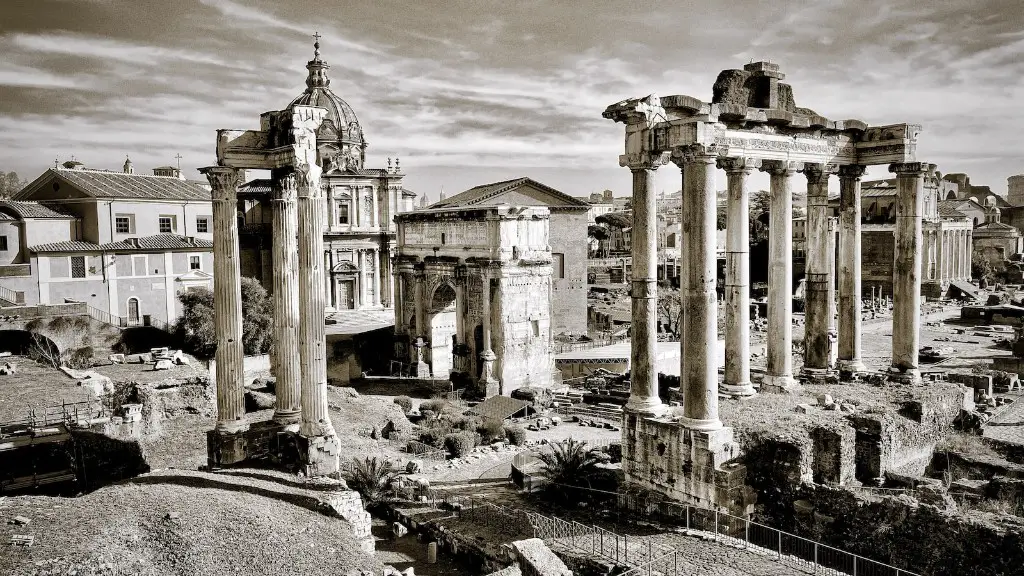Outfits of Upper Classes in Ancient Rome
In Ancient Rome, clothing was an essential part of the social hierarchy and prestige that was associated with different social classes. Upper-class people had certain clothes that they wore to show their wealth and power, while lower-class people had simple clothing which was less elaborate and expensive. The upper classes in Rome often wore togas and tunics made of luxurious fabrics such as silk and linen. Togas were draped garments that were usually worn in public, while tunics were usually worn as everyday clothing or on special occasions. The color of the clothing often indicated the social status of the person wearing it; purple and gold were associated with royalty and higher classes, while white and green were worn by lower classes.
Women in Ancient Rome mostly wore stolas, which was a long and flowing garment that covered their feet. Upper-class women often wore silk or linen fabrics with beautiful decorations such as gold embroidery or pearls. Women also wore jewelry, including earrings, necklaces and bracelets. Women often wore their hair in elaborate styles, such as braids or curls.
As for men, the toga was the most common garment worn by upper-classes in Ancient Rome. The toga was a large garment made of wool or linen, draped around the body and fastened with a belt. It was generally worn by men over the age of fourteen and was considered a symbol of respectability. Men also wore sandals or shoes and occasionally a cape or cloak when attending important events.
Outfits of Upper Classes in Ancient Egypt
In Ancient Egypt, clothing was also an important indicator of social status. The upper classes in Ancient Egypt often wore garments made of linen or fine wool, while lower-class people had simpler clothing made of coarse wool or linen. Upper-class men usually wore a kilt or tunic as their main garment, and would also sometimes wear a short cape, or a robe with long sleeves. Men also wore jewelry and headdresses to indicate their status.
Upper-class women wore long, pleated gowns made of linen, silk or wool. These gowns could be decorated with intricate embroidery and beadwork. Women often wore jewelry, including necklaces and earrings, to accentuate their clothing. Women would also wear makeup such as kohl and henna, as well as colorful wigs or bouffant hairstyles to show their wealth and power.
Children of upper classes in Ancient Egypt also wore special clothing. Girls wore knee-length dresses with shoulder and waist straps, while boys wore tunics or kilts that were usually tied with a belt. Both boys and girls wore sandals or shoes to protect their feet.
Designs and Materials
In Ancient Rome and Egypt, upper-class garments were usually made of luxurious materials such as silk and linen. They were often decorated with intricate embroidery and beadwork. Colors were also important; purple, red and blue were associated with royalty and wealth, while white, green and yellow were the colors of lower classes.
In both cultures, jewelry was also important for those in the upper-classes. Jewelry was often used to indicate wealth and power, as well as to add a luxurious touch to the outfit. Rings, necklaces and earrings were popular among both men and women.
Impact on History and Culture
The clothing of upper classes in Ancient Rome and Egypt had a profound impact on the history and culture of these civilizations. Clothing was used to show power and prestige, and was seen as a symbol of respect. It was also indicative of social status and the wealth of the individual or family.
Even today, clothing continues to convey social messages and has the power to influence how people are perceived by others. The clothing designs and materials used by the ancient upper classes are still seen today in modern fashion, whether it be in the form of togas, tunics, kilts or gowns.
Significance of Clothing Today
Today, clothing is more than just a way to protect the body from the elements; it is also used to express one’s personality and to send social messages about identity and status. Clothing can be used to create an impression and to make a statement, and the materials and designs used are still influenced by the designs worn by the upper classes in Ancient Rome and Egypt.
In today’s world, clothing continues to be an indicator of social status and wealth, and it enables people to show their individuality. From streetwear to luxury fashion, the power of clothing is apparent in all facets of life.
Modern Interpretations of Ancient Styles
Modern fashion has been inspired by Ancient Rome and Egypt in many ways. Designers have taken elements from ancient clothing styles and incorporated them into their own designs. From casual wear to formal attire, ancient elements can be seen in modern fashion, from the use of colors, materials and silhouettes.
Gisele Bündchen has famously worn a modern version of the ancient Egyptian dress, and designers from Maison Margiela to Dolce & Gabbana have also made interpretations of ancient clothing. Even high street retailers have been influenced by Ancient Rome and Egypt for their latest collections.
Influence on Contemporary Culture
The influence of Ancient Rome and Egypt can still be seen in contemporary culture. From architecture to theatre, the imprint of these two empires is evident. Even in fashion, the ancient styles continue to be relevant.
Most celebrities and influencers have been seen wearing apparel with ancient influences – from Vetements to Gucci and Chanel. Ancient Roman and Egyptian elements have been reinvented in modern fashion, proving the timelessness of these civilizations’ clothing styles.
Future of Ancient Influence in Fashion
It is evident that the influence of Ancient Rome and Egypt will continue to shape fashion for many years to come. With modern designers taking inspiration from these ancient civilizations, there will undoubtedly be more creations that will emerge.
Designers have the potential to transform ancient clothing styles and create new interpretations that are modern yet timeless. The influence of Ancient Rome and Egypt has become an integral part of the fashion industry, and with today’s modern technological advances and sustainability concerns, there is no limit to the possibilities that could arise.


